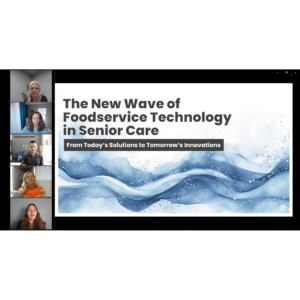A team approach to HIT
Last month, the Office of the National Coordinator held a roundtable meeting of LTPAC (long-term post-acute care) thought leaders. Our objective was to inform policy makers of the status of LTPAC HIT (health information technology) and develop initial strategies for possible inclusion of major LTPAC provider groups in part of Stage 3 of the HITECH Act.
As previously mentioned there is no plan to include us in the incentive plan as that would require additional funding through Congress. We still look for ways to assist LTPAC providers and vendors to improve their HIT infrastructure. The deliverable from the roundtable was a white paper that is being developed. Once the white paper is released I will provide you the reference.
I wanted to follow up on last month’s outline of Stages 1-3 by discussing Stage 4 HIT Infrastructure Due Diligence. At this point in your planning you would have a draft of a clinical strategic plan. I do realize that to properly complete Stage 2—clinical workflow process analysis—you will require more time than just the month between these blogs. But by now you should have developed the way you are going to go about analyzing your clinical workflow processes.
At this point it is important that you understand where the healthcare market is going and commit whether or not to stay with “this is the way we always did it” philosophy. In many ways you might decide to stay with what you are doing, but do a thorough analysis of everything. When you make an upgrade in your HIT you will have to make changes and you have to know the starting point.
The 30-day re-hospitalization program is a perfect example. Our clinical workflow processes have to include the hospital and how you are going to partner–how you and the hospital will share patient-centric information from the hospital to the home care agency or skilled nursing facility as well as how the information flows back to the hospital.
With Stage 4 you have to form your HIT team in order to perform due diligence and not have autocratic decision-making. I encourage you to have a team made up of all involved in using a new software system. This will pay off in the end as you will have buy in. Also, as we move to more of an integrated HIT system all functions are involved in one way or another in the care of a patient.
When you have your draft HIT clinical strategic plan you are ready to determine what are your HIT infrastructure options by asking questions of the team. Examples are:
- Is your IT system current software technology? If it is not, you have to upgrade. It will be very difficult to develop a facility person-centric electronic medical record with old technology. It will even be more difficult when we move to clinical decision software, alerts and algorithms. If you have proprietary software or your off-the-shelf software has morphed into a unique to your facility then you probably should shift to off-the-shelf software. With the expansion of functionality and assessments it is best to have a vendor partner that will keep up with the changes.
- Does the IT vendor have sustained ability? It is important that your HIT partner vendor also have the resources to sustain it through the future healthcare changes–changes like the new care and payment models.
- Do you want a LTPAC integrated enterprise system (SNF, home care and hospice)?
- Do you want a single platform enterprise system (application data elements feed and are stored in a repository)?
- Do you want to host the application or have it hosted?
To start the due diligence process you should write a comprehensive request for proposal (RFP). It should contain what you see is the future for your organization and ensure the vendor can provide what you require. Your IT team should be involved in the vendor presentations and there should be predetermined questions you want answered by the vendor.
LTPAC HIT SUMMIT
I wanted to spend a little more time on the 8thannual LTPAC HIT Summit that will be held June 18-19 in Baltimore. On Sunday afternoon there is a complimentary pre-conference tutorial on the connections between LTPAC and meaningful use. The keynote speaker is Judy Murphy, RN, deputy national coordinator for programs and policy at ONC. There are a number of sessions on choosing IT applications and an interoperability showcase demonstrating what others have done in this new world of healthcare. Sessions on patient consumers, quality improvement and outcomes, meaningful use, re-hospitalization, care coordination and many more are planned for a packed two days of LTPAC HIT. The speakers are the leaders of HIT. This is a great networking opportunity and for getting the answers or contacts you need to update your HIT infrastructure. Registration is getting near the limit so go to the LTPAC HIT Collaborative website to register: www.ltpachealthit.org

John Derr, RPh, currently serves as Health Information Technology Strategy consultant to Golden Living, where he previously served as CIO and CTO. He is currently on the HHS Federal Advisory Committee on Standards, a CCHIT Trustee, and serves on several other federal and state HIT advisory groups. His extensive career has included major executive positions with Squibb, Siemens, Tenet (NME) and AHCA/NCAL. With almost 50 years of experience in healthcare, Derr has also started four companies.
Related Articles
Topics: Technology & IT











